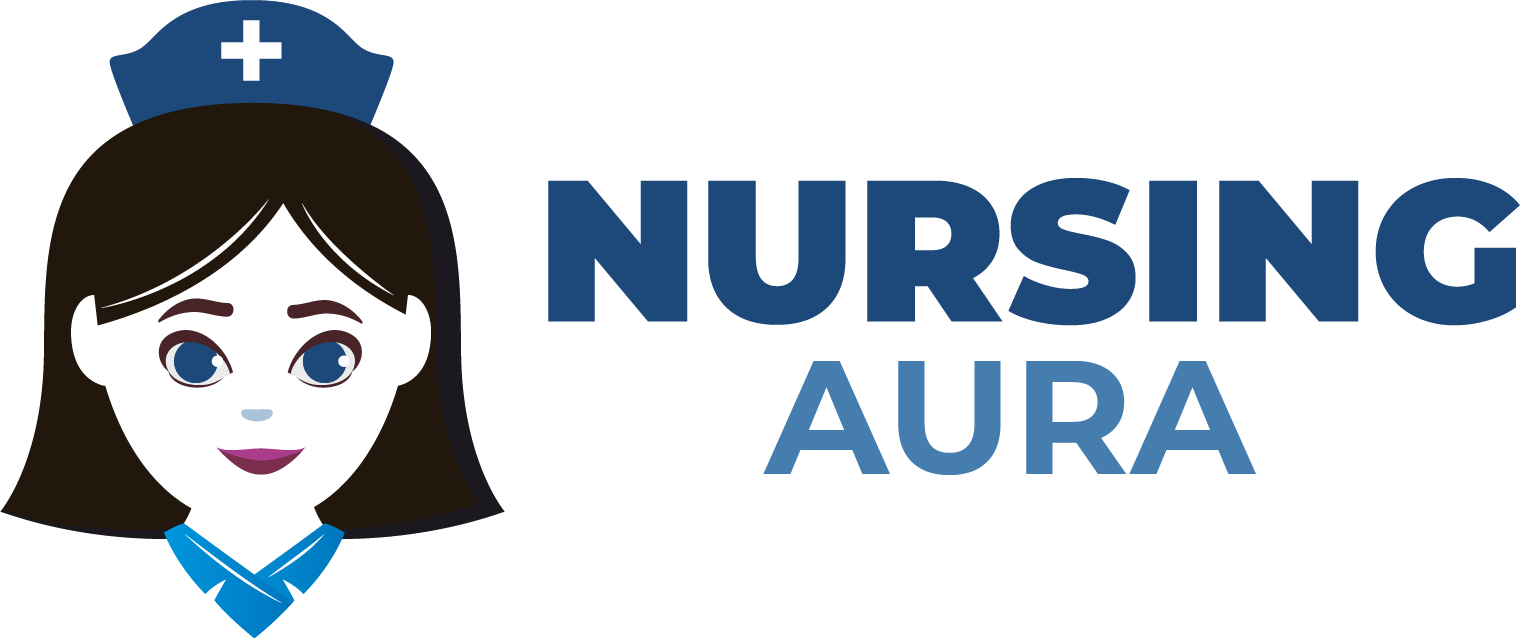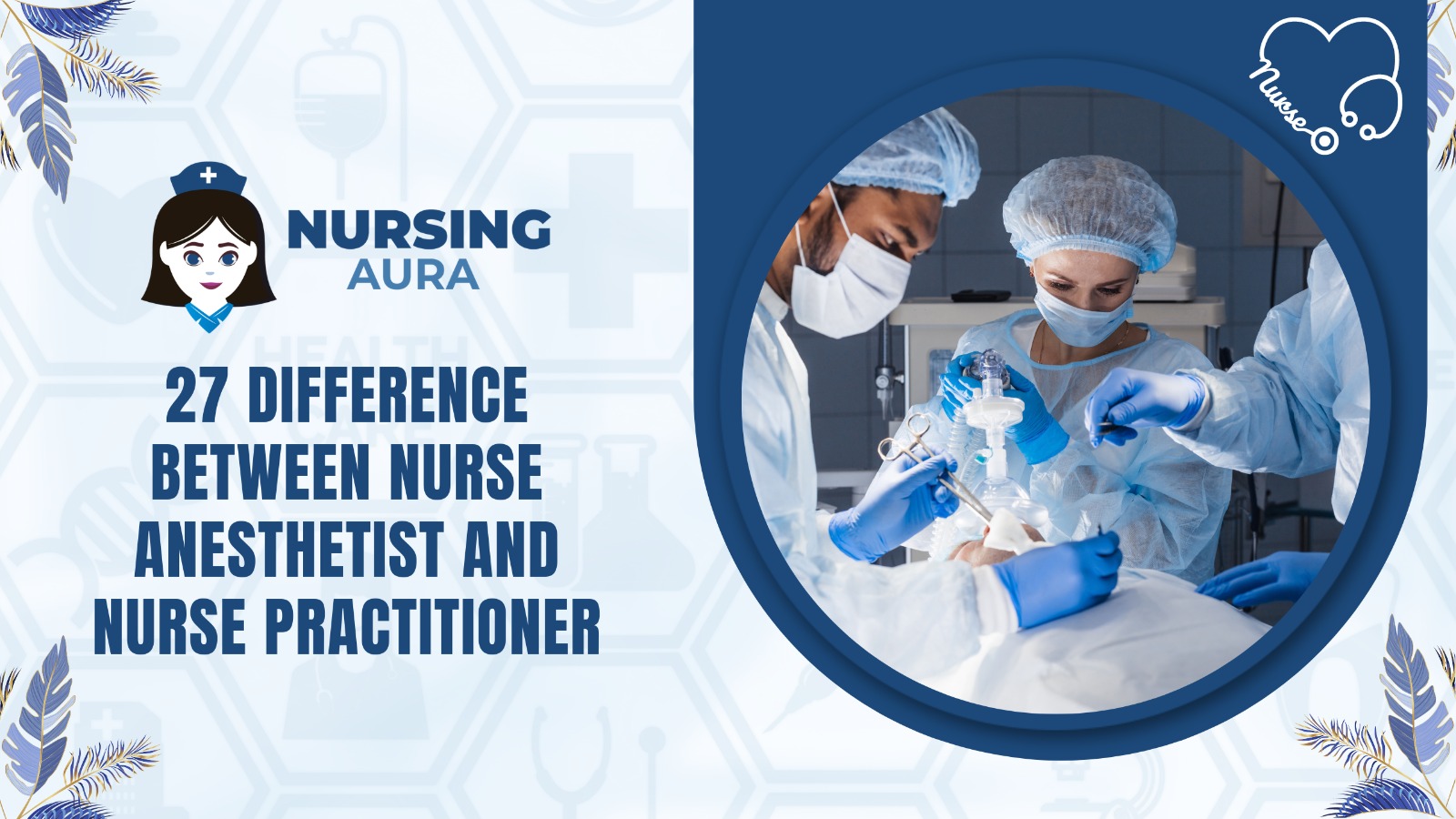Nurse Anesthetist and Nurse Practitioner are highly specialized clinical nurses with specific duties and competence. They share a nursing education but differ in fundamental duties, training, and area of practice.
Nurse anesthetists, also known as CRNAs, are advanced practice nurses who provide anesthesia and ensure patient comfort during surgery. Their master’s or doctorate degrees in nurse anesthesia are earned via intensive training. Before surgery, CRNAs examine patients, create individualized anesthesia regimens, give anesthesia medicines, monitor vital signs, and manage recovery. Anesthetic delivery is their specialty, making them essential to surgical teams.
Master’s or doctorate programs in family medicine, pediatrics, or adult-gerontology prepare NPs. Diagnose, prescribe, arrange diagnostic testing, and offer complete patient care. Nurse practitioners make healthcare more accessible, manage chronic diseases, and promote well-being. In hospitals, clinics, and private practices, they collaborate alongside physicians.
Core duties distinguish Nurse anesthetist and Nurse Practitioner. For safe and comfortable surgery, nurse anesthetists are specialists in anesthesia administration and perioperative care. They emphasize a restricted healthcare system. In contrast, Nurse Practitioners provide primary care, health promotion, and illness prevention. They support healthcare delivery by working alone or with doctors.
Both Nurse Anaesthetists and Nurse Practitioners are skilled nurses, yet they have different tasks. Nurse Assistants provide anesthesia and offer perioperative care, whereas Nurse Practitioners provide a variety of healthcare services in primary care. The healthcare system relies on both positions to provide distinct patient care and improve patient well-being.
| S.No. | Aspects | Nurse Anesthetist | Nurse Practitioner |
| 1 | Education | Master’s or Doctoral degree in nurse anesthesia | Master’s or Doctoral degree in nursing |
| 2 | Scope of Practice | Focus on administering anesthesia during surgery | Focus on primary care, diagnostics, and treatment |
| 3 | Specialization | Specializes in anesthesia and pain management | Specializes in various areas (e.g., pediatrics, geriatrics) |
| 4 | Practice Settings | Often work in hospitals, surgery centers, or clinics | Work in various settings, including clinics and hospitals |
| 5 | Prescriptive Authority | Limited prescription privileges for anesthesia drugs | Full prescriptive authority, including controlled substances |
| 6 | Patient Population | Primarily serve patients undergoing surgery | Serve diverse patient populations of all ages |
| 7 | Autonomous Practice | Often work under the supervision of anesthesiologists | Can practice autonomously in many states |
| 8 | Anesthesia Management | Administer anesthesia and monitor patients during surgery | Diagnose, treat, and manage chronic and acute conditions |
| 9 | Continuing Education | Ongoing training in anesthesia techniques | Ongoing education in their chosen specialty |
| 10 | Certification | Must obtain CRNA (Certified Registered Nurse Anesthetist) certification | Obtain certification in their chosen nurse practitioner specialty |
| 11 | Clinical Skills | Emphasis on anesthesia skills and airway management | Emphasis on clinical assessment, diagnosis, and treatment |
| 12 | Collaboration | Collaborate closely with surgeons and anesthesiologists | Collaborate with physicians, nurses, and other healthcare providers |
| 13 | Pain Management | Skilled in acute and chronic pain management | May have some training in pain management |
| 14 | Healthcare Settings | Work primarily in perioperative and critical care settings | Work in primary care, specialty clinics, and hospitals |
| 15 | Procedure-Based Practice | Perform invasive procedures related to anesthesia | May perform various procedures depending on specialty |
| 16 | State Regulations | Governed by state regulations related to anesthesia practice | Governed by state regulations for nurse practitioners |
| 17 | Salary Range | Generally earn a higher median salary | Salary can vary based on specialization and location |
| 18 | Job Outlook | Steady demand due to surgical procedures | Growing demand for primary care and specialty services |
| 19 | Patient Interaction | Limited patient interaction outside the OR | Extensive patient interaction for assessment and care |
| 20 | Follow-up Care | Minimal follow-up care with surgical patients | Provide ongoing care and follow-up for chronic conditions |
| 21 | Emergency Response | Trained in emergency response during surgery | Handle emergencies within their scope of practice |
| 22 | Practice Independence | Less independent practice in anesthesia | Greater autonomy in patient care and decision-making |
| 23 | Medical Diagnoses | Primarily focus on anesthesia-related diagnoses | Diagnose and manage a wide range of medical conditions |
| 24 | Insurance Coverage | Focus on perioperative care and insurance coverage for anesthesia services | Address insurance coverage for various healthcare services |
| 25 | Care Continuum | Typically not involved in long-term care | Provide care across the continuum, from prevention to treatment |
| 26 | Professional Organizations | May belong to organizations like the AANA (American Association of Nurse Anesthetists) | Belong to specialty-specific organizations |
| 27 | Advanced Practice Nursing | A subset of advanced practice nursing | A broader category encompassing various specialties |
Frequently Asked Questions (FAQS)
1. What is the main difference between a Nurse Anesthetist (CRNA) and a Nurse Practitioner (NP)?
The main distinction between a Nurse anesthetist (CRNA) and a Nurse Practitioner (NP) is their duties and scope: CRNAs provide anesthesia and ensure patient comfort during surgery, whereas NPs provide a variety of healthcare services, generally at the primary care level. Anesthesia experts are CRNAs, whereas NPs diagnose, prescribe, and provide full patient care.
2. Nurse Anaesthetists and Nurse Practitioners need what education?
Advanced practise nurses CRNAs and NPs have separate educations. CRNAs usually have a master’s or doctorate degree in nurse anesthesia, which requires considerable training in patient care and anesthesia. If they specialize in family medicine, pediatrics, or adult-gerontology, NPs finish master’s or doctorate programs.
3. Where are Nurse Anaesthetists and Practitioners?
In hospitals, surgical centers, and labor and delivery units, nurse anesthetists (CRNAs) are in high demand. Hospitals, clinics, primary care offices, specialist practices, schools, and corporations use nurse practitioners (NPs). Nurse practitioners can operate in a variety of healthcare settings due to their broad reach.
4. Are nurse anesthetists and practitioners' physicians' collaborators?
CRNAs and NPs can work alongside physicians, but their partnership takes different forms. Surgeons and anesthesiologists work with CRNAs to administer safe anesthesia. Due to state legislation and practice settings, NPs commonly collaborate with doctors. , especially in primary care, NPs are educated to provide autonomous care.
5. What does the healthcare system benefit from nurse anesthetists and practitioners?
Anaesthetists and nurse practitioners are essential to healthcare. Anaesthetists and CRNAs oversee surgical patients for safety and comfort. Comprehensive patient care by NPs improves healthcare access, chronic illness management, and wellness. By satisfying a variety of patient needs, they improve healthcare delivery.

